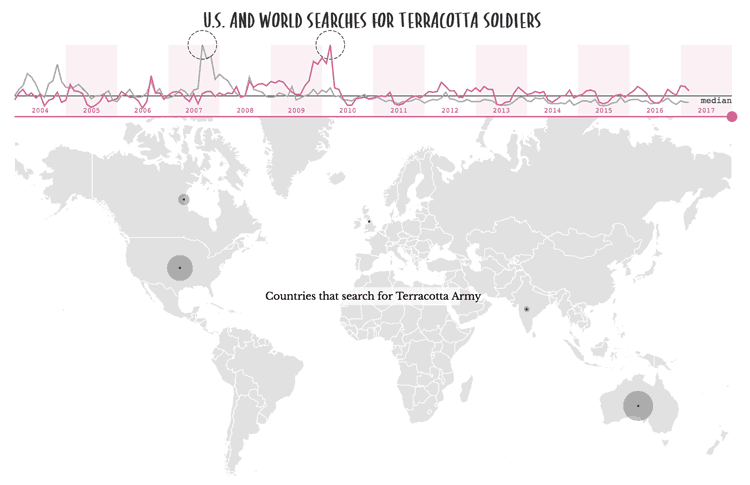Google News Labs has been inviting data scientists to dig through its massive trove of search data and come up with unique visualizations exploring trends.
One of the resulting projects is Explore Adventure which analyzed where and when people in different countries search for locations in other countries.
Travel searches from around the world
Developed by data designer Shirley Wu, Explore Adventure takes a deep dive into travel searches from almost 40 countries. While the most searched for locations were cities, Wu also found that searches were influenced by the time of year and in response to specific events.
For example, searches in the United States trended towards Naples (Italy) and Barcelona (Spain) in the spring, Cebu (Philippines) and Chiang Mai (Thailand) in the winter.
The animation below toggles between US based searches in the spring and fall. The height of each bar indicates the search volume and the positioning of the countries is based on how far each country is geographically from the United States.
As indicated by the legend at the top, the bars are also color coded based on the type of location searched for.
Wu found that searches were not only seasonal but also varied from year to year. US based searches for expensive locations peaked in in the early 2000s and have declined since 2008, the beginning of the financial crisis.
Wu also found that certain museum exhibitions had a strong enough influence that they showed up in search results.
She explains the spikes in the graphic below:
Notice the two spikes in searches, one along the gray World line in late 2007 and another along the red U.S. line in early 2010. The first spike is the United Kingdom searching for the British Museum‘s special exhibit, “The First Emperor: China’s Terracotta Army”, that ran from September 2007 to April 2008 (and the U.S. had no interest). The second is National Geographic Museum‘s exhibit in Washington D.C., “Terra Cotta Warriors: Guardians of China’s First Emperor”, that ran November 2009 to March 2010.

More detail about the data project can be found on Wu’s Data Sketches site.
